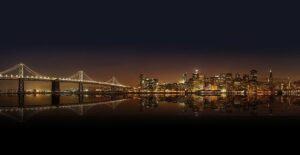Introduction
In 1954, the largest advertising medium in the world was television. This revolutionary technology had gained significant popularity and had become the go-to platform for advertisers to reach a wide audience. With its ability to combine visuals, audio, and motion, television offered a unique and compelling way to promote products and services.
The Rise of Television Advertising
Television advertising quickly gained traction in the 1950s and became the dominant advertising medium for several reasons. Firstly, television sets were becoming more affordable, leading to a rapid increase in the number of households owning one. This widespread adoption meant that advertisers could potentially reach millions of viewers simultaneously.
Secondly, television provided a captivating and immersive experience for viewers. Unlike print media or radio, television could showcase products in action, using visuals and sound to create a powerful impact. Advertisers realized the potential of this medium to engage viewers and persuade them to purchase their products.
Furthermore, television offered advertisers the opportunity to target specific demographics. By airing commercials during specific programs or time slots, advertisers could tailor their messages to reach their desired audience. This level of targeting was a significant advantage over other advertising mediums, such as newspapers or billboards, which had a more general reach.
The Impact of Television Advertising
The rise of television advertising had a profound impact on the advertising industry as a whole. Advertisers had to adapt their strategies to fit the unique characteristics of television. They had to create visually appealing and attention-grabbing commercials that could effectively communicate their message within a limited time frame.
Television advertising also led to the emergence of new advertising agencies specializing in producing television commercials. These agencies understood the medium’s potential and had the expertise to create compelling advertisements that resonated with viewers. This specialization further fueled the growth of television advertising.
Moreover, television advertising brought about changes in consumer behavior. As viewers were exposed to more advertisements, they became more aware of different products and brands. This increased awareness often translated into higher sales for advertised products, leading to a significant impact on the economy.
Conclusion
In 1954, television became the largest advertising medium in the world. Its ability to combine visuals, audio, and motion allowed advertisers to create compelling commercials that engaged viewers and influenced their purchasing decisions. The rise of television advertising revolutionized the industry and had a profound impact on consumer behavior.
References
– Encyclopedia Britannica: britannica.com
– History.com: history.com
– Advertising Age: adage.com





